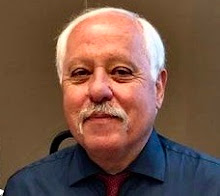
Returning to the mountain of my youth, longtime friend Tom Maloney and I headed north for a wilderness experience and the opportunity to visit with family and friends. Mt. Hood’s imposing presence, particularly with a white winter cape, captivates practically everyone who comes in sight of it, and especially those who live in Portland.
Having spent most of my youth in the forests surrounding Wy’east (as it was known to the Multnomah Indians), my family’s association with the Mt. Hood actually predates my own existence. My grandmother's family had purchased a cabin in nearby Welches near the Salmon River, so my parents spent their youth "on the mountain."
In the early ‘60s, we would camp every summer on the Mt. Hood National Forest. Later, as a Boy Scout, we would “rough it” at various lakes on the mountain's flanks. As part of a climbing group, I reached the summit with my Dad at age 11. I have climbed Mt. Hood another 10 times since, most recently in 2003, when I shot a summit photo (above) of the mountain's shadow at sunrise (coincidentally, with buddy Tom Maloney). We plan to climb the mountain again.
According to local legend, Wy’east (Mt. Hood) was a rival of Klickitat (Mt. Adams) for the love of Loo-Wit (Mt. St. Helens). After a vicious battle of fire and brimstone that must have resembled the end of times to the natives, and ultimately destroyed the Bridge of the Gods over the mighty Columbia River, Klickitat emerged victorious.
The first non-native people to see the mountain were officers in the employ of Captain George Vancouver who had crossed the bar and entered the great river, sailing upriver as far as Rooster Rock. They named the mountain for Lord Samuel Hood, a British naval officer. The first Americans to see Wy'east were Lewis and Clark: “This is the Mt. Hood (of) Vancouver,” they noted in their journals.

Much like the top of the mountain when lenticular clouds circle the summit, it’s not clear who actually first scaled Mt. Hood. Joel Palmer is listed as the first to attempt the mountain in 1845, although David Douglas (the Scottish botanist of Douglas fir fame) is credited by some as having first scaled the peak in 1833. Less credible is the claim of the first successful attempt by a group that included Palmer and Thomas Dryer, founding publisher of The Oregonian, in 1854.
The Mazama Climbing Club later discredited this claim and determined that Henry L. Pittock (who succeeded Dryer as owner and publisher of The Oregonian) made the first authenticated climb. Pittock also built the 22-room renaissance revival known as the Pittock Mansion overlooking downtown Portland. His climbing party suffered from snow blindness and minor injuries and had to remain in camp for several days before returning to Portland.

So it was with great anticipation that I returned to the mountain for a bit of scenery and socializing: a hike up to the summit of Tom Dick and Harry Mountain (above) and a trip to Timberline Lodge before hooking up with my sister Carla and husband Bob –- who own a home in Welches on the Salmon River –- for dinner at the Zigzag Inn.
After a trip into Portland to visit with Iona Maloney, the 95-year-old matriarch of the family, and longtime friend Greg Seymour, we went back up the mountain to Brightwood for a Taylor family reunion in honor of friends Pat and Sharon Taylor. All told, a great trip back to the mountain; it was all the motivation I needed to get back there in the future -- and sooner than later.








